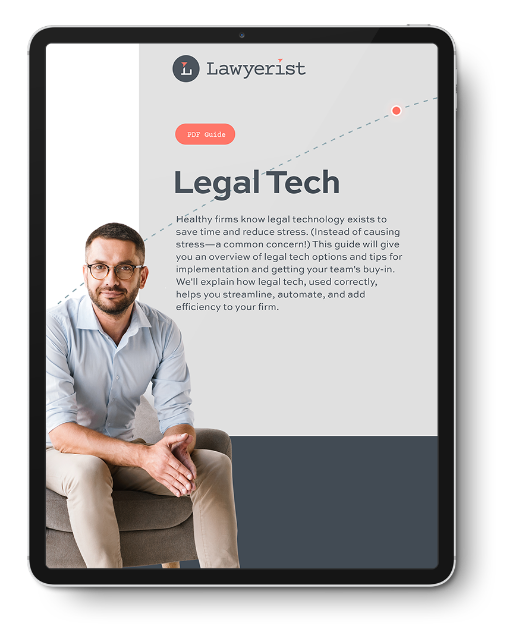What Law Firm Technology Means for You
Using relevant law firm technology leads to a more productive and efficient law firm. You know this, so you already use a considerable amount of tech in your office. If you’re like most law firms, though, you’re constantly wondering if you’re doing enough. Then add decision fatigue: how do you choose the right tool, implement it quickly, and get buy-in from your team?
In the following six chapters, we address these questions for you—or, at least, teach you to answer them for yourself. As you read through, keep in mind that by ‘law firm technology,’ we mean hardware and software.
In Section I of this Guide, we’ll show you how to determine your firm’s technology needs. First, we’ll discuss the advantages of using legal technology tools in your office. Then, we’ll take a look at what types of technology a law firm will typically use. Finally, we’ll talk about competencies you’ll need to take advantage of these technologies.
Section II focuses on implementation. We’ll discuss how to select the right product that fits your organization’s needs. Then we’ll move to best practices for getting buy-in from your team. Finally, we’ll talk about maintaining your tech stack (the combination of tools and software you select to manage your firm) with systematic audits.
Once you get to Chapter 3, you can use this Legal Tech Guide in tandem with our Field Guide to Buying Legal Technology and our Product Reviews. These will help you determine whether a product has the right features for your needs and how it works with your other legal technology tools.
